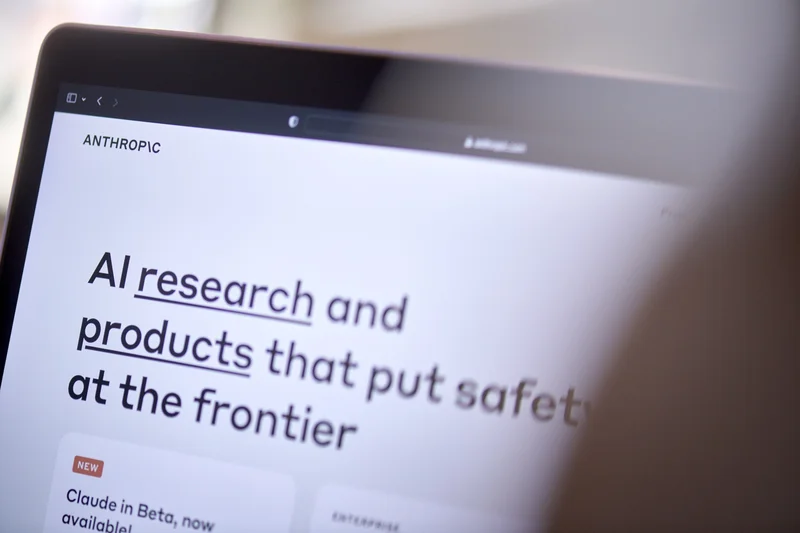Of course. Here is the feature article, written in the persona of Dr. Aris Thorne.
*
You probably saw the headlines. A recent one declared that Amazon’s Anthropic investment boosts its quarterly profits by $9.5B, and it wasn’t from selling more books or cloud servers. The entire windfall came from a single line item on their balance sheet: a “mark-to-market” adjustment on their investment in the AI powerhouse Anthropic.
It’s the kind of number that feels abstract, almost unreal. A ghost in the financial machine. But I want you to ignore that number for a moment. Because while Wall Street was mesmerized by the paper gain, the real story—the one that will actually shape our future—was being written somewhere else entirely. It was being written in server racks and on factory floors.
The $9.5 billion isn’t the signal; it’s the echo. The signal is the sound of something immense being built, something so foundational it’s compressing Amazon’s legendary profit margins and draining its cash flow. It’s the sound of a new world being forged in silicon and steel.
The Engine Room of a New Era
Let’s talk about what Amazon is actually doing with its money. They just switched on "Project Rainier," an $11 billion AI data center complex designed to be one of the largest AI compute clusters on the planet. They spent over $35 billion on property and equipment in a single quarter, a 55% jump from the year before. This isn't just a business investment; it’s a civilization-level infrastructure project, and the sheer scale of it is happening so fast—it means the gap between what's possible today and what will be commonplace tomorrow is closing faster than we can even comprehend.
Think about the great industrial projects of the past. The transcontinental railroad. The interstate highway system. These were massive, audacious bets that cost a fortune and took years to pay off, but they fundamentally rewired the physical world and created the conditions for a century of prosperity. What Amazon, Microsoft, and Google are doing right now is the 21st-century equivalent. They are laying down the digital tracks for an era of intelligence.
When Amazon CEO Andy Jassy says, “As fast as we’re adding capacity right now, we’re monetizing it,” he’s not just talking about renting out servers. He’s talking about building the engine room for a new kind of economy. But an engine, no matter how powerful, is useless without a skilled hand to connect it to the wheels. And this is where the story gets truly exciting.

The Human Bridge to the Machine
For all the talk of algorithms and automation, the most fascinating development in AI right now isn’t a piece of code. It’s a job title that some are calling the new hot job in AI: forward-deployed engineers.
When I first read about this role, I honestly just sat back in my chair, speechless. It’s the kind of breakthrough in thinking that reminds me why I got into this field in the first place. An FDE is a new kind of professional—a hybrid of elite software engineer, business consultant, and translator. These aren't people sitting in a distant office writing code. They are, as the military-inspired name suggests, deployed directly onto the front lines of business.
They are essentially AI whisperers. In simpler terms, they take the raw, planetary-scale power of a model like Anthropic’s Claude and embed themselves within a company—a bank, a manufacturer, a hospital—to help that company solve its unique problems. They learn the language of the business, understand its deepest needs, and then custom-build solutions on the spot. It’s what data firm Palantir calls "product discovery from the inside."
This is the missing piece of the puzzle. We have the raw power. We have the incredible models. But how do you connect that potential to the messy, specific reality of a Fortune 500 company's workflow or a farmer’s field? You send in a human expert.
Look at what OpenAI’s FDEs did with John Deere. By working side-by-side with the agricultural giant, they helped create tools that reduced the need for chemical spraying by up to 70%. That’s not a theoretical gain in a research paper. That’s a tangible, world-changing outcome. It’s better for the environment, better for our food, and better for the farmer’s bottom line.
This is the paradigm shift. We’re moving beyond general-purpose AI tools and into an era of bespoke intelligence, crafted by human artisans who work at the intersection of code and culture. Of course, embedding this kind of power directly into the fabric of our industries comes with enormous responsibility. We have to ensure it's done ethically, transparently, and with human well-being as the North Star. But the potential is just breathtaking. What problems could your industry solve with a dedicated AI artisan working from the inside?
The Last Mile is Always Human
So, let’s go back to that $9.5 billion paper gain. It’s not the story. The real story is the fusion of two powerful forces: the almost unimaginable capital and computational power of giants like Amazon, and the focused, empathetic, and creative power of the Forward-Deployed Engineer.
The greatest technological revolution in history, it turns out, isn’t about removing humans from the equation. It’s about finding a new, more profound way to put them right at the center of it. We aren’t building a world run by machines. We are building a world augmented by them, and it will be shaped, guided, and perfected by a new generation of human pioneers. The future isn’t automated; it’s co-created. And it’s just getting started.









